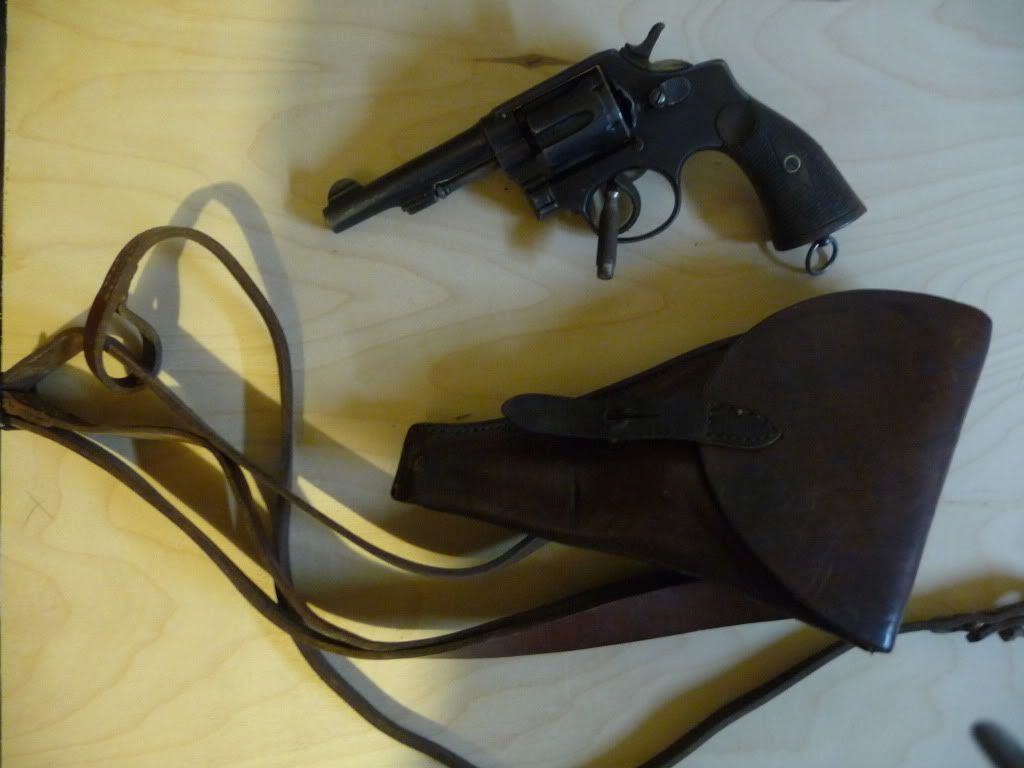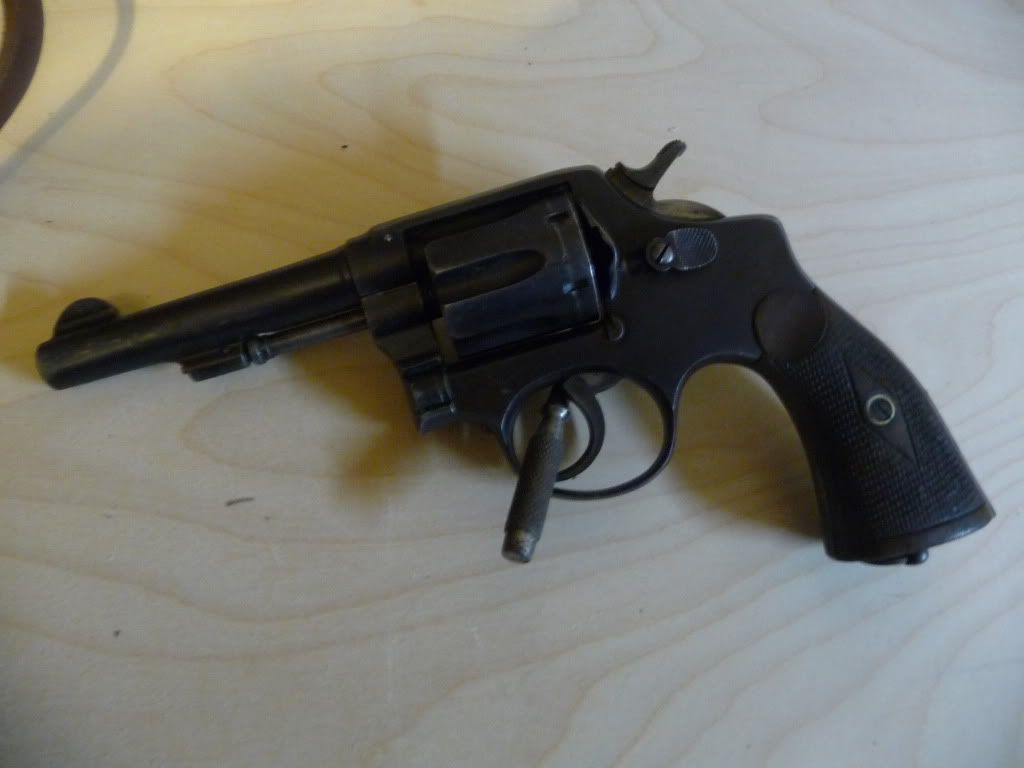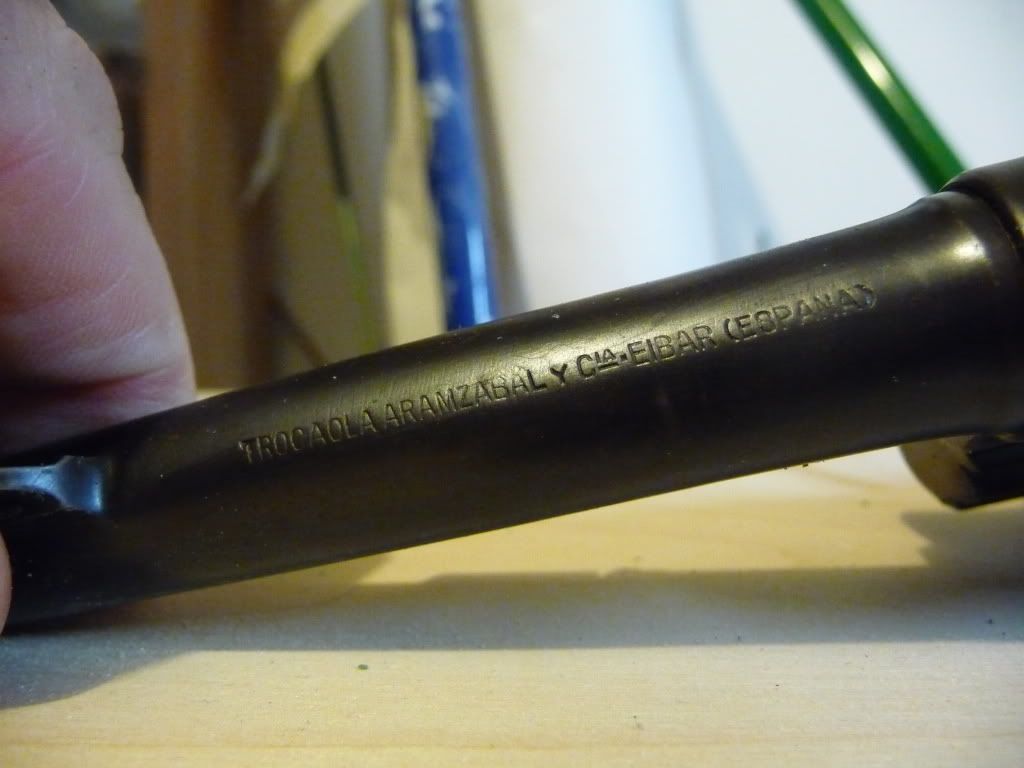My Dad gave me this one that he apparently had in his gun safe. I don't know where he got it, for how long he had it, or what he paid for it (hopefully not much).
My research tells me that it's a Spanish made copy in 8mm Lebel Revolver (I guess it's proper name is 8mm Ordnance, but most all references still use the 8mm Lebel moniker).



From what I've read, Tracaola Aramzabal Y CIA Eibar made some very nice quality copies during WW1 for both Britain in .455 Webely and France in 8mm. Unfortunately, this one is a very poor quality copy and probably has a value well under $100.
The fit and finish are poor at best and the trigger pull is horrendous. The trigger doesn't even feel like it's in the correct location. While I like the look of this revolver, I can't see it ever being a serious collector's piece, only a curio at best. I understand that hundreds of thousands of these were made and there is not much interest in even the high quality specimens, even in Europe.
On a positive note, it did cause me to increase my knowledge about a small niche of revolvers one rarely hears about. There is very little mention in most arms history books about these from what I've seen.
My research tells me that it's a Spanish made copy in 8mm Lebel Revolver (I guess it's proper name is 8mm Ordnance, but most all references still use the 8mm Lebel moniker).



From what I've read, Tracaola Aramzabal Y CIA Eibar made some very nice quality copies during WW1 for both Britain in .455 Webely and France in 8mm. Unfortunately, this one is a very poor quality copy and probably has a value well under $100.
The fit and finish are poor at best and the trigger pull is horrendous. The trigger doesn't even feel like it's in the correct location. While I like the look of this revolver, I can't see it ever being a serious collector's piece, only a curio at best. I understand that hundreds of thousands of these were made and there is not much interest in even the high quality specimens, even in Europe.
On a positive note, it did cause me to increase my knowledge about a small niche of revolvers one rarely hears about. There is very little mention in most arms history books about these from what I've seen.
